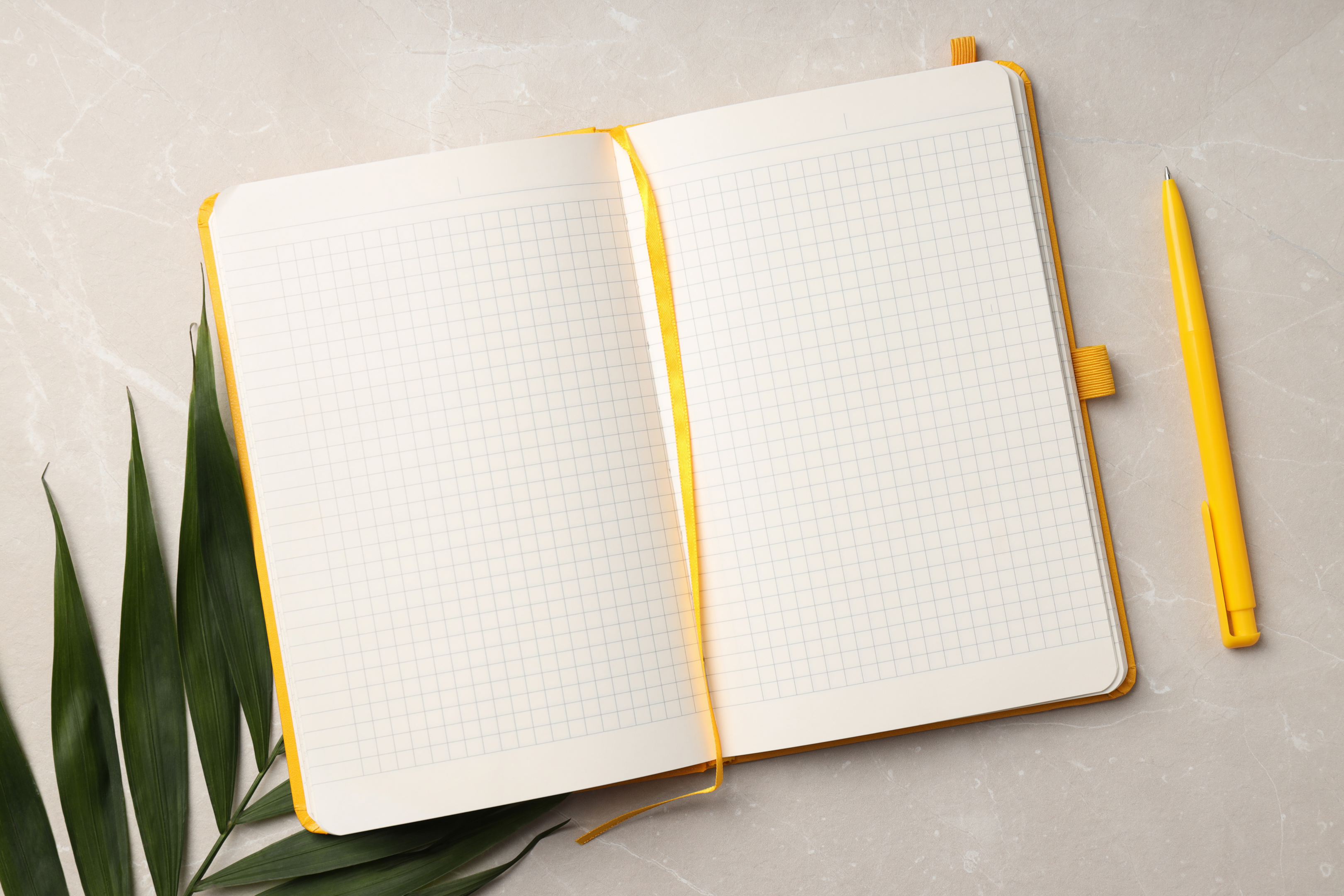The Ultimate Guide to Using a Notebook as a Travel Journal
In today's digital age, where smartphones and tablets dominate our daily lives, there's something nostalgically charming and profoundly enriching about keeping a handwritten travel journal. For travel enthusiasts, digital nomads, and journaling aficionados alike, a notebook offers more than just a blank canvas; it acts as a personal repository for memories, experiences, and reflections. This guide will explore how you can elevate your travel adventures by using a notebook as a travel journal, providing practical tips, creative ideas, and insights into its many benefits.

Why Keep a Travel Journal?
Capturing Authentic Memories
One of the primary reasons to keep a travel journal is to capture memories in their most authentic form. While photos and videos are great for visual recollections, words can encapsulate the emotions, thoughts, and nuances that pictures often miss. A travel journal allows you to document your journey in real-time, ensuring that every detail, no matter how small, is preserved.
Enhancing Mindfulness and Reflection
Journaling encourages mindfulness by allowing you to slow down and truly absorb your surroundings. When you take the time to write about your experiences, you engage with your environment on a deeper level, fostering a greater appreciation for the places you visit. Additionally, reflecting on your travels through writing can provide valuable insights and personal growth, making each journey not just a physical adventure, but a mental and emotional one as well.
Personal Creativity and Expression
A travel journal is a unique outlet for personal creativity and expression. Whether you enjoy sketching, doodling, or practising your calligraphy, a journal provides the perfect space to let your artistic side flourish. Moreover, incorporating elements like ticket stubs, postcards, and pressed flowers can transform your notebook into a vibrant and interactive scrapbook that you'll cherish for years to come.
Choosing the Right Notebook
Size and Portability
When selecting a travel journal, consider the size and portability of the notebook. A compact, lightweight notebook is ideal for travel, as it can easily fit into your backpack or handbag without adding extra bulk. However, ensure that the notebook is large enough to accommodate your writing style and any additional elements you wish to include.
Paper Quality
The quality of the paper is another crucial factor. Opt for a notebook with thick, smooth pages that can handle various writing instruments without bleeding through. This is particularly important if you plan to use markers, watercolours, or other creative tools. Acid-free paper is also a good choice as it prevents yellowing over time, ensuring your journal remains pristine for years.
Binding and Durability
Travel can be rough on your belongings, so choose a notebook with a sturdy binding and a durable cover. Hardcover notebooks offer better protection for your pages, while spiral-bound options allow for easier writing on the go. Some travellers prefer notebooks with elastic closures and built-in pockets to keep loose items secure and organised.
Setting Up Your Travel Journal
Pre-Trip Preparation
Before you embark on your journey, take some time to set up your travel journal. Create an introductory page with your name, contact information, and a brief overview of your travel plans. This not only personalises your journal but also provides essential information in case your notebook is lost or misplaced.
Packing Essentials
Equip yourself with a few essential tools to enhance your journaling experience. These might include:
-
Pens and Pencils: Choose reliable writing instruments that won't smudge or fade over time.
-
Markers and Highlighters: Add colour and emphasis to your entries with a variety of markers and highlighters.
-
Adhesive Tape and Glue: Secure mementoes like ticket stubs, postcards, and photos in your journal.
-
Scissors: Handy for cutting out articles, maps, or other items to include in your journal.
-
Pocket Printer: Consider investing in a portable photo printer to instantly print and add photos to your journal.
Creating a Layout
Having a consistent layout can make your journal more organised and visually appealing. Divide your notebook into sections or chapters for each destination or leg of your journey. You might also want to create dedicated pages for specific purposes, such as:
-
Itinerary: Outline your travel schedule and key activities.
-
Budget Tracker: Monitor your expenses and stay within budget.
-
Contacts: Record the names and contact information of people you meet along the way.
-
Bucket List: List the must-see attractions and experiences for each location.
How to Write Engaging Entries
Daily Logs
One effective way to document your travels is by maintaining daily logs. At the end of each day, take a few moments to jot down your experiences, observations, and emotions. Describe the places you visited, the people you met, and the food you enjoyed. Highlight any unexpected events or memorable encounters, and don't forget to include sensory details like smells, sounds, and textures to bring your entries to life.
Reflections and Insights
In addition to daily logs, write reflective entries that delve deeper into your thoughts and feelings about your journey. Consider how your travels are impacting you personally, what you've learned from the different cultures you've encountered, and how your perspective has changed. Reflective writing not only enhances self-awareness but also provides a richer narrative for your journal.
Creative Elements
Infuse creativity into your journal by incorporating various elements, such as:
-
Sketches and Doodles: Capture scenes, landmarks, or moments that inspire you.
-
Quotes and Lyrics: Include meaningful quotes or song lyrics that resonate with your experiences.
-
Lists and Plans: Create lists of favourite spots, future travel goals, or packing tips for reference.
-
Mind Maps: Use mind maps to brainstorm ideas, plan itineraries, or summarise your thoughts.
Making Your Travel Journal Interactive
Collecting Souvenirs
Collect small, flat souvenirs during your travels that can be easily added to your journal. These might include ticket stubs, postcards, business cards, and pressed flowers. Not only do these items add a tactile dimension to your journal, but they also serve as tangible reminders of your adventures.
Adding Photographs
Photographs are a powerful way to complement your written entries. Use a pocket printer to instantly print and add photos to your journal, or wait until you return home to create a more polished photo collage. Pair each photo with a caption or description to provide context and enhance the storytelling aspect of your journal.
Using Technology
Embrace technology to make your travel journal even more interactive. QR codes are a fantastic way to incorporate digital content into your notebook. Generate QR codes that link to your travel blog, social media posts, or videos, and paste them into your journal for a multimedia experience. This allows you to combine the best of both worlds—handwritten entries and digital content—creating a dynamic and immersive travel journal.
Sharing Your Travel Journal
Personal Keepsake
Your travel journal is a deeply personal keepsake that will continue to bring joy and nostalgia long after your journey has ended. Cherish it as a testament to your adventures and growth, and revisit its pages whenever you need a reminder of your incredible experiences.
Inspiring Others
If you're comfortable sharing your journal, consider using it as a source of inspiration for others. Share selected entries, photos, or creative pages on social media or your travel blog. Your insights and experiences can motivate fellow travellers and journaling enthusiasts to embark on their own adventures and document their journeys.
Networking and Connections
A travel journal can also serve as a valuable networking tool. When you meet new people during your travels, share your journal with them to spark conversations and connections. Exchanging stories and recommendations can lead to lasting friendships and enrich your travel experience.
Key Features to Include in Your Travel Journal
When it comes to travel journaling, there are several key features you should consider incorporating into your notebook to make it more effective and enjoyable. Start with journal pages that suit your travel style, whether you prefer blank pages for freeform entries or themed pages that provide prompts and ideas. Travel journals can benefit from a mix of both to cater to various types of entries, from daily notes to specific highlights.
Including a travel diary section can help you structure your thoughts and ensure you jot down essential details that you might otherwise forget. The other features in your travel journal could include built-in pockets for souvenirs, a world map to mark your travels, and perhaps a section to sketch out the big picture of your journey. These extras not only enhance the functionality of your notebook but also make it easier to remember things long after you've returned home.
Conclusion
Keeping a travel journal is an enriching and rewarding experience that allows you to capture your adventures, reflect on your experiences, and share them with others. With the right tools, layout, and writing techniques, you can create a unique and engaging record of your journey that will stay with you for years to come. So grab a notebook, pack some essentials, and get ready to embark on the journey of a lifetime. Happy journaling! Keep exploring, keep writing, and keep creating memories that will last a lifetime. So don't wait any longer- start your travel journal today and embark on an exciting journey of self-discovery and adventure! Happy travels!


Leave a comment